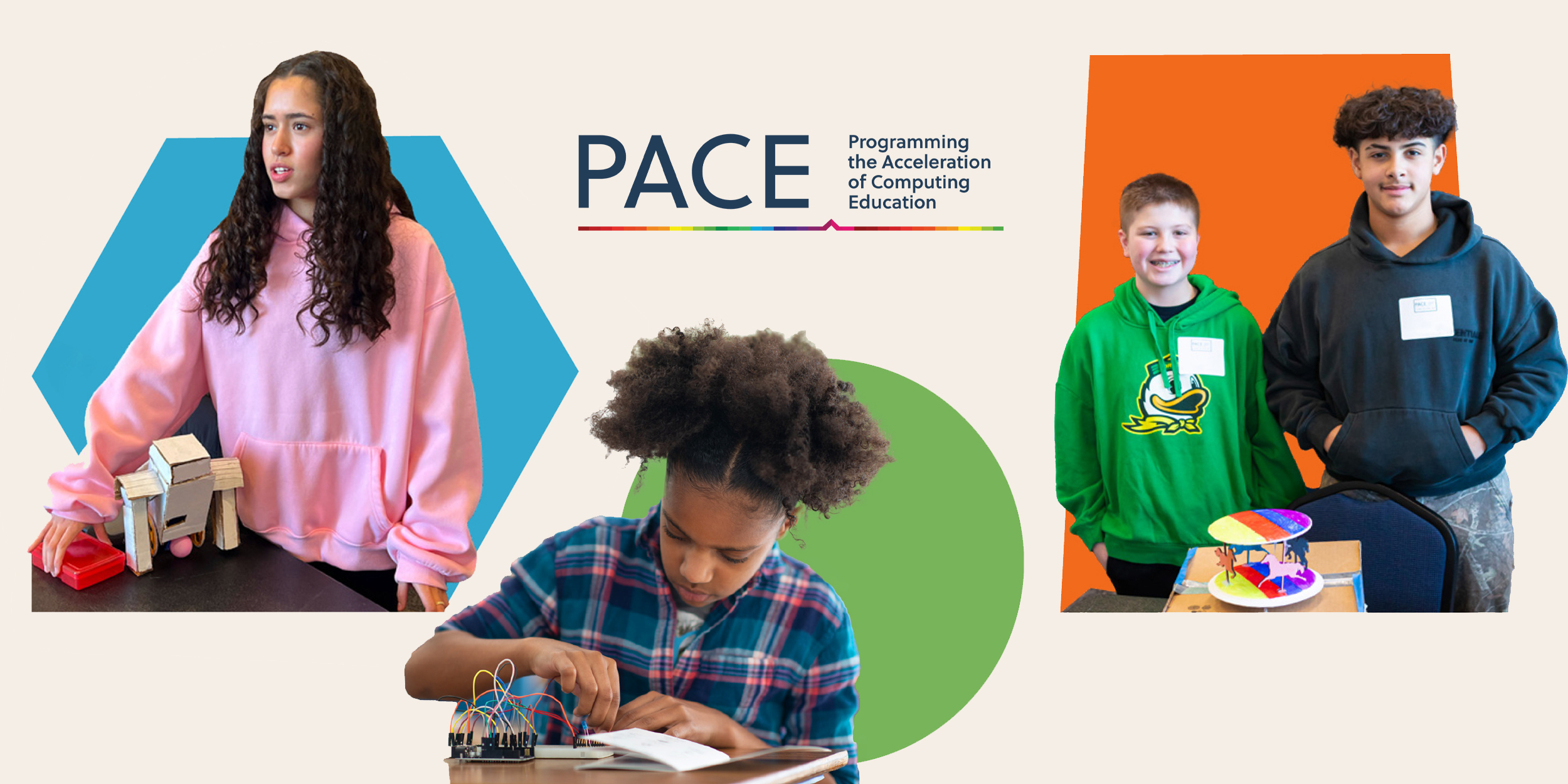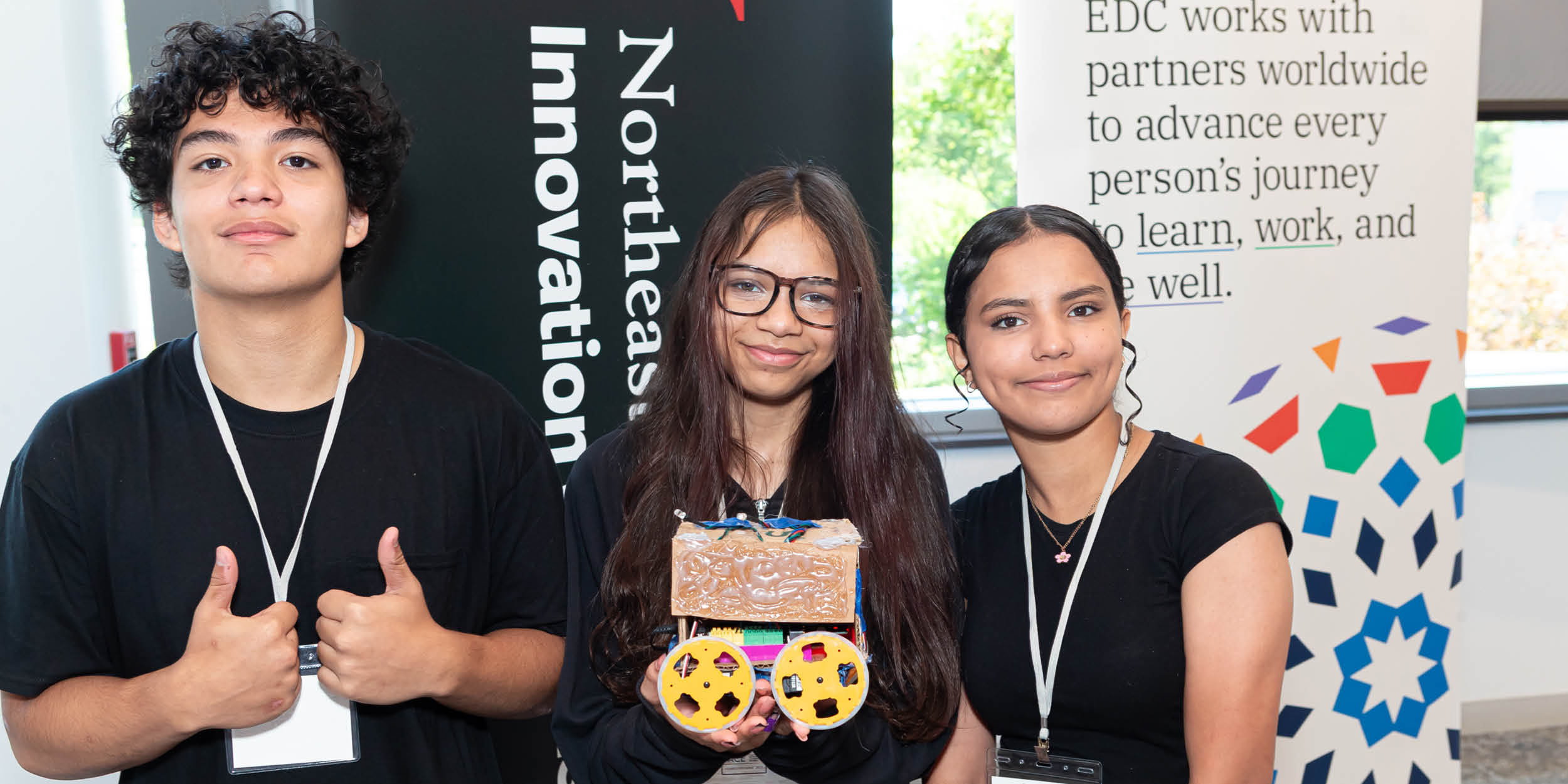Lessons from PACE: Part 1 – Building Sustainable Computer Science Programs
Evidence-based strategies for transforming CS education from an afterthought to a district priority

Building effective computer science (CS) programs in schools is challenging. Despite the critical importance of developing computational thinking skills for all students, many school districts lack the capacity, resources, and strategic planning necessary to provide robust CS learning opportunities. The PACE initiative, a project run by EDC and the Massachusetts Department of Elementary and Secondary Education, has addressed this need by sharing its findings in a free toolkit for districts that features guidance in setting up and sustaining strong CS programs.
The results of the PACE initiative, in which districts implement high-quality CS education for all middle school students, are compelling: students who initially believed they couldn’t succeed in CS become confident programmers, and high schools report incoming students with foundational skills that didn’t exist just a few years earlier.
As one PACE teacher observed, “We can see a transformation in students in just three weeks, where they go from saying they can’t do it, to being the lead programmer for their group.”
Five Key Levers for District Success
Based on PACE implementation data, five critical strategies emerged for building sustainable CS programs:
1. Establish District Stakeholder Councils for Long-Term Sustainability
Leadership support is crucial, but distributed ownership makes programs sustainable. PACE districts created District Stakeholder Councils (DSCs)—groups of teachers, administrators, counselors, and community members who met quarterly to oversee CS program implementation.
Why this works: DSCs maintained momentum through staff turnover and budget constraints. The DSCs were an important mechanism for moving from piecemeal approaches to CS to an approach that incorporated input and perspectives from a range of stakeholders.
Implementation guidance: Create councils with representatives from multiple stakeholder groups, provide external facilitation, and ensure meetings produce tangible outcomes that guide ongoing work.
2. Prioritize CS Placement on Student Schedules
Successful districts moved beyond treating CS as an optional elective by getting it on the schedule for every student. As one PACE leader emphasized, “Build in consistent exposure for all students, because they don’t know what they don’t know.”
Why this works: Universal exposure ensures equity and allows students to discover interests they might never have explored otherwise.
Implementation guidance: Start with middle grades and highlight alignment with state standards to create urgency. Make course titles engaging and relevant to increase enrollment.
3. Build Systematic Infrastructure Through Collaboration and Coordination
Creating districtwide CS infrastructure requires intentional attention to collaboration, coordination, and curriculum materials. Many districts had individual teachers doing innovative work, but systematic implementation made these innovations consistently available to all students.
Why this works: CS teachers need peer networks to review and adapt materials, especially since training from curriculum producers doesn’t always translate directly to classroom implementation.
Implementation guidance: Create dedicated time for cross-grade coordination and establish networks for collaborative material review and adaptation.
4. Invest in Building Staff Confidence and Capacity
Districts must build CS confidence and capacity among staff who may not see themselves as experts. As one administrator noted, “It’s about building relationships with teachers so that they’re comfortable taking these academic risks—bringing in new curriculums, and sometimes it doesn’t go well.”
Why this works: Creating supportive environments for risk-taking enables teachers to develop confidence with CS instruction, which often requires more facilitation than direct teaching.
Implementation guidance: Provide time for staff to become comfortable with materials, ensure access to quality professional development, and recognize that CS instruction represents an adjustment for many teachers, even those who may have a CS background.
5. Use Data to Identify and Address Inequities
In order for districts to understand issues related to their CS initiatives, they need to look at data critically. One PACE district discovered that while overall CS enrollment showed no gender discrepancies, deeper examination revealed boys were concentrated in AP classes while girls were primarily in digital literacy courses.
Why this works: Inequitable participation can be obscured in aggregate data. Critical analysis enables districts to create truly equitable pathways for all students.
Implementation guidance: Examine data at the course level, distinguish between digital literacy and CS courses, and use findings to guide targeted interventions.
Moving Forward: From Piecemeal to Transformational
The PACE initiative demonstrates that sustainable CS education requires systematic, districtwide transformation rather than isolated efforts. The five levers outlined here work together: DSCs provide governance, universal scheduling ensures equity, systematic infrastructure creates teacher collaboration networks, staff investment builds confidence, and data analysis ensures equitable outcomes.
The transformation described by PACE teachers—watching students go from “I can’t do this” to leading programming teams in just three weeks—reflects what becomes possible when districts commit to comprehensive evidence-based approaches. As schools face pressure to prepare students for an increasingly digital future, the PACE model offers a road map for creating lasting change that serves all students, not just those who already see themselves as “tech kids.”
The question isn’t whether districts can afford to invest in comprehensive CS education, it’s whether they can afford not to.








